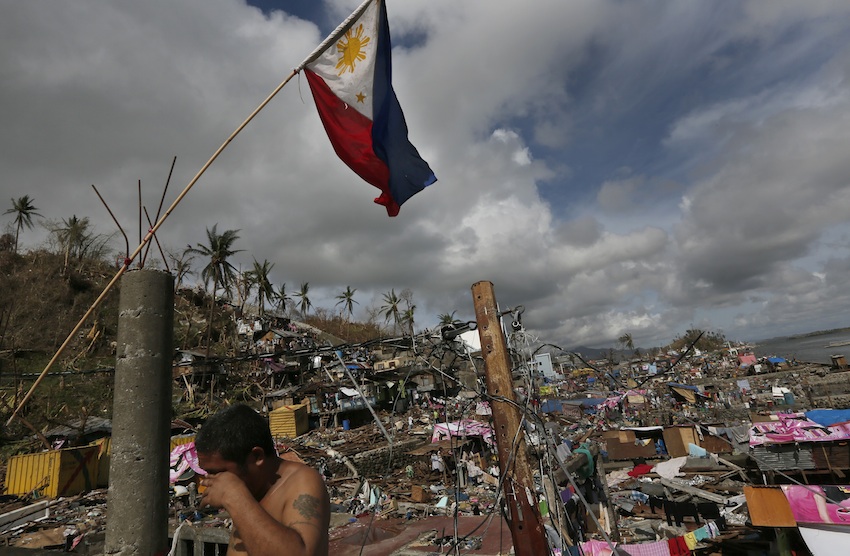Why Was Typhoon Haiyan So Destructive?
The Philippines is a nation that’s no stranger to typhoons—known on the Atlantic as hurricanes—but none have rivaled the damage wreaked by Haiyan this past week. As America watches reports of destroyed cities, enormous casualty counts, and difficulty delivering aid, many have wondered just why Haiyan was so bad. We asked Boston University marine geologist Richard Murray to weigh in.
1. It wasn’t just that the Philippines was underprepared.
The Philippines is a poor country, and many of its structures weren’t able to withstand the storm. But that doesn’t explain the extent of damage. “This storm near as I can tell or near as anybody can tell is either the strongest or the second strongest on record,” Murray says. The other he cites is 1969’s Hurricane Camille. “Both the storms had winds approaching 200 mph which is tornado-like.” The difference is that a tornado’s winds blow in any one location for only a short amount of time. “I would hazard that while infrastructure in the U.S. would probably do better, it probably wouldn’t do that well, either, under 200 mph winds.”
2. The combination of high wind, storm surge, and rainfall made for a deadly combination.
Adding to the winds was a heavy rainfall and an enormous storm surge, where the water level rises by several feet. “The storm surge is the water responding to the storm’s atmospheric low and getting pulled upward. This upward surge, a mound of water in essence, is traveling with the hurricane. So the wind, rain, and surge all happen at the same time,” Murray says. “People would die in any one of those scenario, but the damage would be dramatically lessened if you had to deal with only one. When you get all three of them,” you see devastation like that in the Philippines.
3. It’s a misconception to think you could easily stay afloat until the storm passed.
Murray says he occasionally hears people wondering whether one could just swim if caught in the rising water. The motion of the water and the enormous amount of debris floating in it would make that nearly impossible. “When there’s this destruction, it’s a slurry. It’s full of busted up houses and buildings and telephone poles and cars and trucks and all the aspects of civilization.”
4. Expect more of these storms.
No one storm can be attributed to climate change, Murray says, pointing to Hurricane Camille, the other contender for strongest tropical storm on record. Camille happened before much of the atmospheric warming we’ve seen in the decades since.
But the conditions created by global warming—namely, a warmer and more moist atmosphere, as well as warmer surface ocean temperatures—will contribute to the size and frequency of tropical storms. “It’s very clear that storms such as this, storms such as Sandy, storms such as Katrina, these are all variations upon a theme. There is a strong chance that they are more likely to be occurring in the future because of global warming.”


